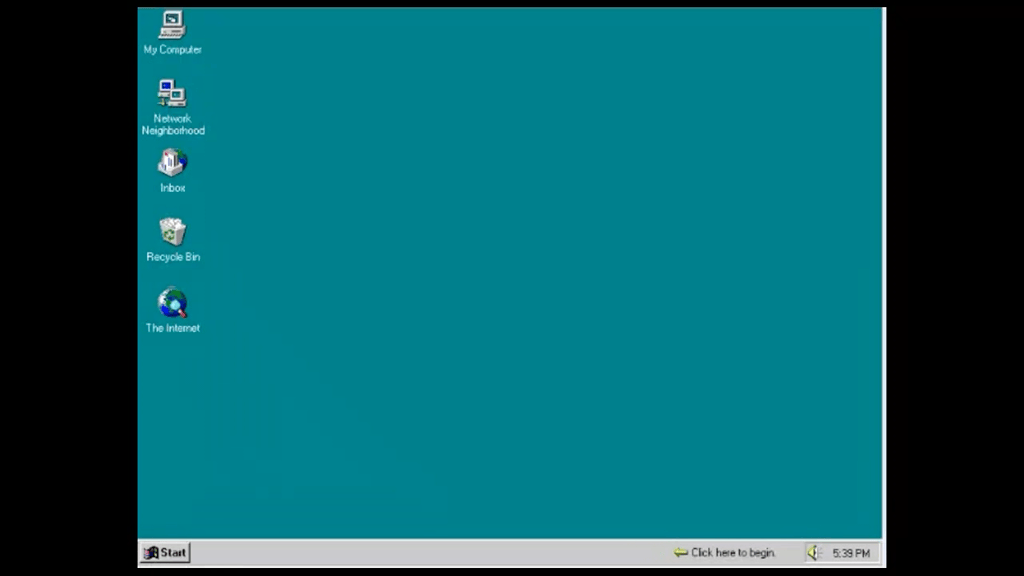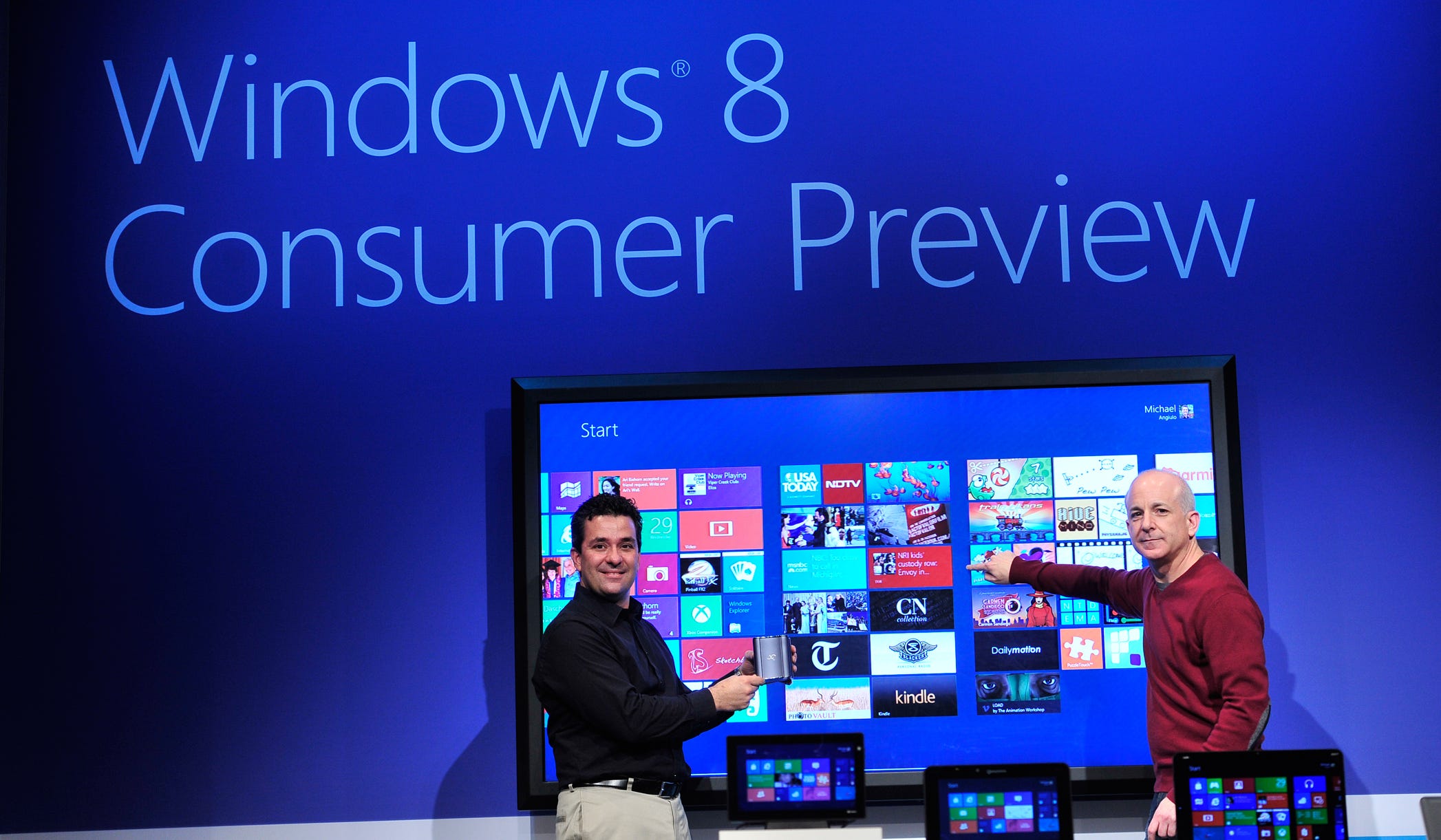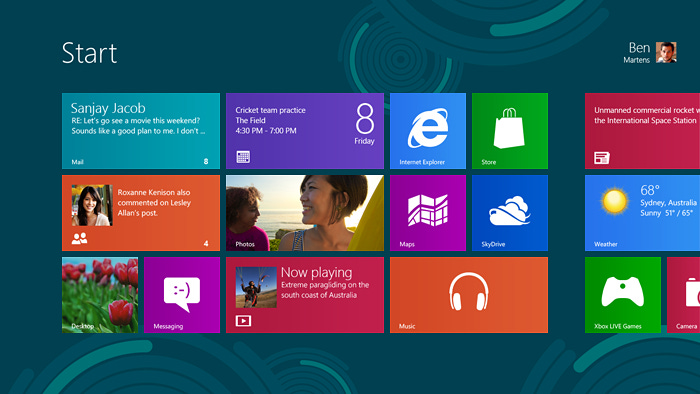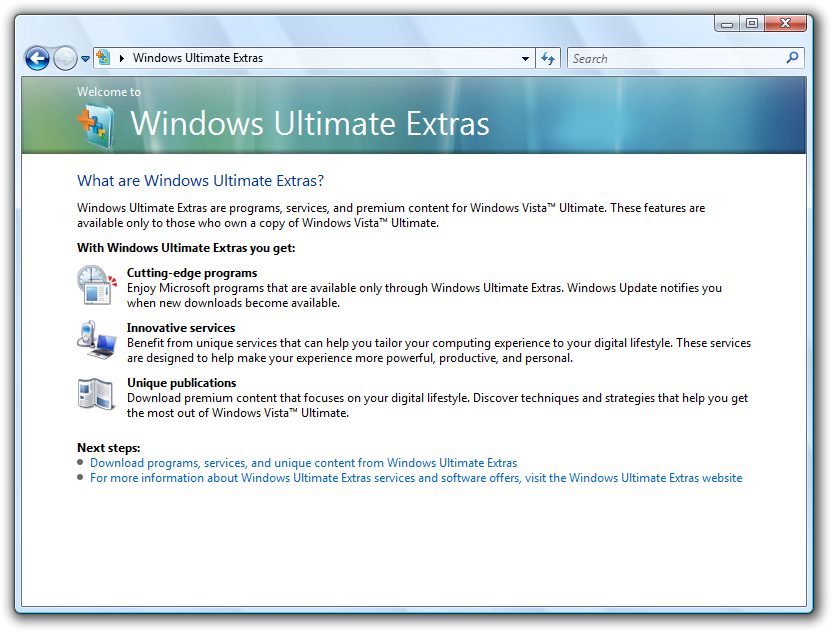095. Welcome to Windows 7, Everyone
Description
While it is incredibly fun to do a first demo of a big product as described in the previous section, there is something that tops that and even tops the actual release to manufacturing. That is providing the release, actual running code, to a product’s biggest fans. It was time to welcome everyone to Windows 7 and put the code that the team had been working on since the summer of 2007 out for the world (of techies) to experience.
Back to 094. First Public Windows 7 Demo
Seattle summers are notoriously difficult on product development. After a long spell of clouds and rains, the beauty and long days of Pacific Northwest summers arrive, neither are particularly conducive to coding.
Summer wasn’t why I ended up here, but it certainly had an impact on me. On my first visit in 1989 during a dismal February, I saw the outdoor Marymoor Velodrome down the street from Microsoft and thought, this is going to be great. On TV it didn’t look as difficult to ride as I eventually learned it was. I sort of rode it exactly one time and that was the day my bicycle arrived from Massachusetts.
But alas, product development demands don’t end even with 15 hours of daylight.
It was going to get busy for the Windows 7 team. Our planned schedule called for the third development milestone to be complete by the end of summer 2008.
We were making progress, but the schedule was slipping. The code was getting better every week, but the overall game of schedule chicken that often plagued a large project was an historical concern. This was our first time as a new team going through this part of a product cycle. While we had a good deal of positive progress building a team culture, Windows was notorious for groups betting against each other’s schedules and being less than forthright with their own.
When HeikkiK was running the Office 95 ship room, he declared that everyone should be working to finish first, not simply to finish second to last. We needed to get to the end of the milestone as a team working together without looking for one group to blame, since it is never one group. JonDe and I had this same concern.
Everyone spent the summer installing daily builds on every PC we could. At one point, I must have had eight different PCs between home and office and was installing on all of them nearly every day. Every night I was installing a new build at home while doing email and other routine tasks. Even though my home “service level agreement” called for no beta software, an exception was made for Windows 7.
I was working at two performance extremes. I went to Fry’s Electronics and built my own “gamer” PC from the best components. I spent big bucks on a newfangled solid-state desktop drive (not common at the time), a crazy graphics card, fast memory, and the most ridiculous Intel chip available. I installed Windows 7. I was blown away by the speed (as well as the noise and wind emanating from the mini-tower). Starting Word or Excel seemed instantaneous. Boot took low single-digit seconds. It reminded me of the first time I used a hard drive on my father’s Osborne computer and how much faster it was compared to floppy disks. I used this PC when I sat at my desk at work, which wasn’t often as I was always walking around the halls.
At the other end of the spectrum were Netbooks. To the degree I could, I had taken a fancy to the Lenovo Netbook, the IdeaPad S10, and carried it with me everywhere especially at my favorite breakfast place (Planet Java) or lunch place (Kidd Valley) where I did a lot of Windows 7 blogging. Every Netbook was close to identical on the inside, but the Lenovo had a good screen and a rugged exterior. I modified mine, replacing the spinning hard drive with a then non-economic solid-state drive to better emulate future laptops like the MacBook Air. It was my primary PC for writing blogs posts, email, spreadsheets, and browsing, and the like, which was most of what I was doing. When we finally got to the Professional Developers Conference, this was the PC I held up with a bright yellow “I’m a PC” sticker on it, stickers marketing created in a jiu-jitsu move embracing the blowback from the Apple TV commercials.
I was constantly on the lookout for memory consumption and the number of running processes, the signs of bloat in Vista—fewer processes and less memory were better. Each process was a critical part of Windows. The number of processes had soared with Vista, and each had overhead in complexity and performance (in contrast to Linux, Windows processes were much more substantial and important to track.) Windows 7 was making impressive strides in reducing memory usage and process complexity. It served to make me feel connected to the engineering of Windows 7 and reminded me of counting bytes and seconds back in the day. I snapped screen shots of the Windows Task Manager and would bug JonDe and AlesH every couple of days.
Each day booting into a new build and seeing the progress was a great day. Each day revealed a crisis or challenge, but as a team everything continued to move forward.
Even though I was mostly an observer, the effort to improve performance was some of the best work of the release. It set a tone for making progress, but also for the ability of teams to work together. The conventional wisdom was that Windows Vista was inevitable and unavoidable as capabilities were added and the product grew which could not have been prevented. Windows 7 disproved that theory.
By midsummer, we had to slip the schedule based on our progress through M2 and M3. Originally our goal was to finish M3 and have a full beta in time for the previously scheduled Professional Developers Conference, PDC, in Los Angeles. We weren’t where we needed to be, so we took about an eight-week slip. The build at the PDC would officially be pre-beta, terminology we just made up. This would be our last slip. JonDe and I were privately relieved at the degree of the slip, but frankly the team was excited to be clearly on track, relatively, for the first time in many years. Depending on your experience or the context, eight weeks can seem huge or literally nothing. It was nothing.
SteveB sent a memo to all of Microsoft outlining some of the work to date for the whole of the fiscal year. The company had made a lot of progress on many fronts. The topic that had occupied a great deal of discussion, and was a good portion of his memo, was Google and competing with it on the consumer front and the potential relationship with Yahoo. SteveB also described the emerging cloud strategy, and the fact that more would be shared on that topic at our upcoming PDC.
Fiscal year 2008 was quite a year for Microsoft. Revenue broke $60 billion and operating profit grew 21 percent to $22.5 billion. The numbers were incredible. Still, the concerns about the PC and catching up on consumer services dominated Wall Street’s view. This memo was one of the early communications in a strategic shift to the cloud platform and you can feel the push-pull between cloud and the traditional model in the technology descriptions. It’s important to say that it was still super early in the journey to the cloud for enterprise computing and the topic was not top of mind for customers, especially as the financial crisis began to take hold. In fact, the feeling that the cloud was architecturally inferior to private data centers was by far the most common customer belief. Their future enterprise computing model was a data center running servers using virtualization. In 2008, the idea that there would be something of a new cloud operating system was mostly a view held inside the halls of Google.
In the memo, SteveB announced that KevinJo was leaving to be CEO of Juniper Networks, and that JonDe and I, along with Bill Veghte (BillV) leading marketing, would report directly to Steve, a reporting structure that remained in place through the release without issue. This was a standard and expeditious way to handle a managerial change at this stage of a big product. Incidentally, Satya Nadella (SatyaN) had recently moved to manage Search and ads in March 2007 and would also report to SteveB in a similar move.
In the lead-up to the PDC we began blogging publicly about Windows 7. With the focus on tech enthusiasts, IT professionals, and the trade press, I created a blog called Engineering Windows 7, or e7. An extension of how we thought about blogging for Office 2007, the blogs were the primary first-party communication channel for the product. We authored long and detailed posts, thousands of words, about the implementation choices we were making and how we measured progress. We offered tons of data to describe real-world Windows use (often my favorites posts). I authored posts but also introduced posts that other team members wrote, each expressing the design point of view and rationale. Many generated a great deal of dialogue and discussion and became news stories themselves. There wasn’t really a Hacker News yet for Windows coverage, but the comments sections of many stories read just like Hacker News would have read. Tech enthusiasts loved to dispute the data provided then just as today.
While to some press the blogging came across as a carefully crafted corporate message, nothing was further from the truth. We were simply blogging. The posts did not go through any corporate machinery or apparatus. They were as authentic as they could be. And the tradition worked so well that after the PDC it became a significant part of the communication of Windows going forward.
There were two relevant industry announcements that at any other time would have caused a great deal of distraction. The PC world was entirely focused on the PC, to the exclu


![108. The End of the PC Revolution [Epilogue] 108. The End of the PC Revolution [Epilogue]](https://substackcdn.com/feed/podcast/82387/post/86893731/d3f1348af12bf87ffb878bd65cadb0ba.jpg)






![101. Reimagining Windows from the Chipset to the Experience: The Chipset [Ch. XV] 101. Reimagining Windows from the Chipset to the Experience: The Chipset [Ch. XV]](https://substackcdn.com/feed/podcast/82387/post/75881900/3a3075fad2c894721724f8a92013a812.jpg)



![097. A Plan for a Changing World [Ch. XIV] 097. A Plan for a Changing World [Ch. XIV]](https://substackcdn.com/feed/podcast/82387/post/70543793/bbf82f6a403f39f35f097a445d9bf827.jpg)



![092. Platform Disruption…While Building Windows 7 [Ch. XIII] 092. Platform Disruption…While Building Windows 7 [Ch. XIII]](https://substackcdn.com/feed/podcast/82387/post/64867897/fc7d958f8115ef0d95ea5a92c0d423b4.jpg)






